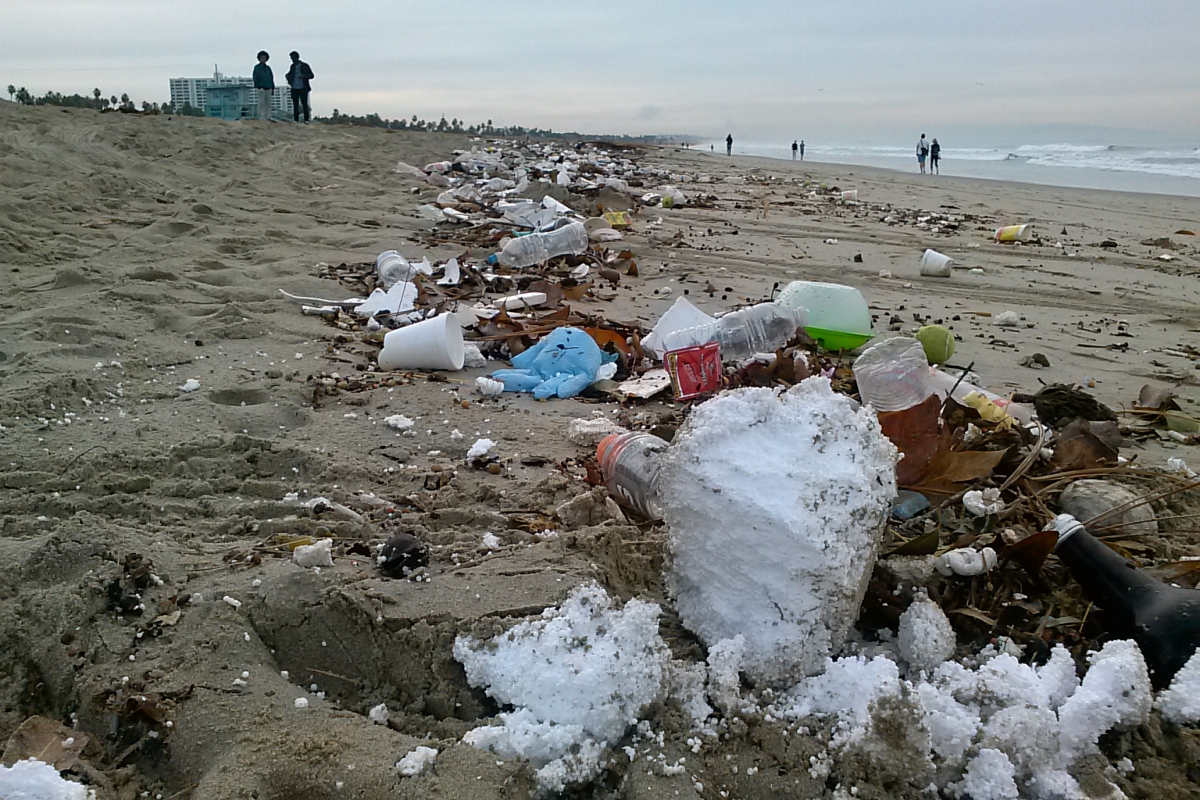Heavy Rains Beg Some Big Questions
James Alamillo, Urban Programs Manager at Heal the Bay, says that this week’s big storm bring opportunities and dangers.
Dec. 2, 2014 — Almost a month to the day since our last rain, Angelenos are experiencing some consistent rainfall over the next two days. And unlike the last rainstorm, which was a one and done, this system is expected to generate an inch or two of precipitation throughout the week.
As we wrote in our blog last month on the first flush of the season, with rain comes runoff.
Rainwater runoff can be captured for future use, whether we are in a drought or not. The County of Los Angeles estimates that during a typical storm event upwards of 10 billion gallons of storm water flushes into the ocean. Letting this resource flow in large volumes to the ocean without catching it is shameful, especially when we import nearly 80% of our potable water. There is a significant energy, environmental, social, and economic cost with that approach that has been long neglected, even hidden. Storm water — if held, filtered and cleansed naturally in groundwater basins — could provide a safe, more secure and less costly source of drinking water. That 10 billion gallons of water from an average single storm in L.A. could fill nearly 120 Rose Bowls. That would provide enough water for a city the size of Santa Monica for more than three months.
The cost of runoff is the amount of pollution carried through our rivers, streams, creeks, and ultimately out to the ocean. In Los Angeles County alone, there are more than 70 major outfalls that spew trash, animal waste, pesticides, automotive fluids and human-gastrointestinal viruses into our county’s bodies of water. This ‘brew’ has been accumulating for months on sidewalks and roadways before being washed into the storm drains. The storm drain system is responsible for discharging this pollution into our rivers, creeks, and ocean. This causes potential human health risks, harms marine life and dampens the tourist economy by littering shorelines.
The County of Los Angeles’ Environmental Health Department and Heal the Bay urge residents and visitors to avoid water contact at Los Angeles County beaches for at least 72 hours following rain event. In some locations and for long-duration rainstorms, staying out of the ocean for more than five days may be more appropriate.
Water literacy is a way of understanding the connections between the drought and imported drinking water, local storm water runoff and sewage, land-use and flooding, water quality and water use. Rain provides an ideal opportunity to explore water literacy, particularly in the face of water scarcity. As individuals, we must reflect on our daily water consumption, our own ability to conserve and capture water, and evaluate with a critical eye the systems that handle water. So step out for a minute and let the rain hit you, let it revitalize your thoughts on water, and then let’s begin to learn how to use it more efficiently.
 Sad but true: the beach after heavy rain at the Pico Kenter storm drain
Sad but true: the beach after heavy rain at the Pico Kenter storm drain
Photo by Frankie Orrala, Angler Outreach Program Manager, Heal the Bay



